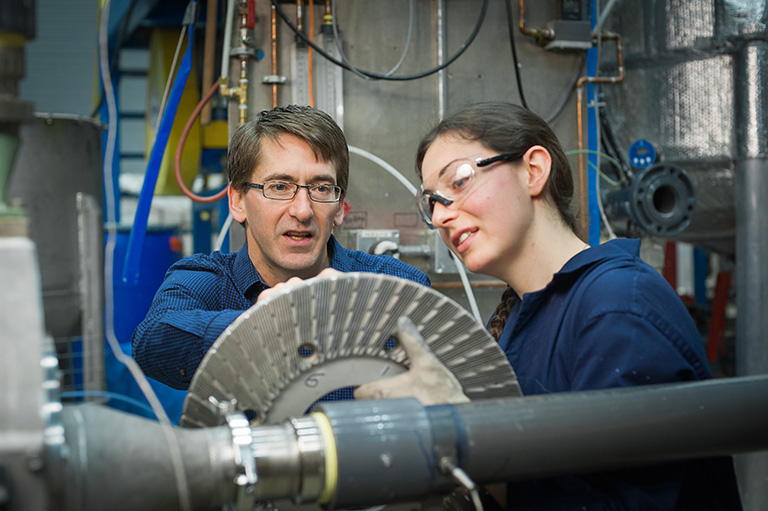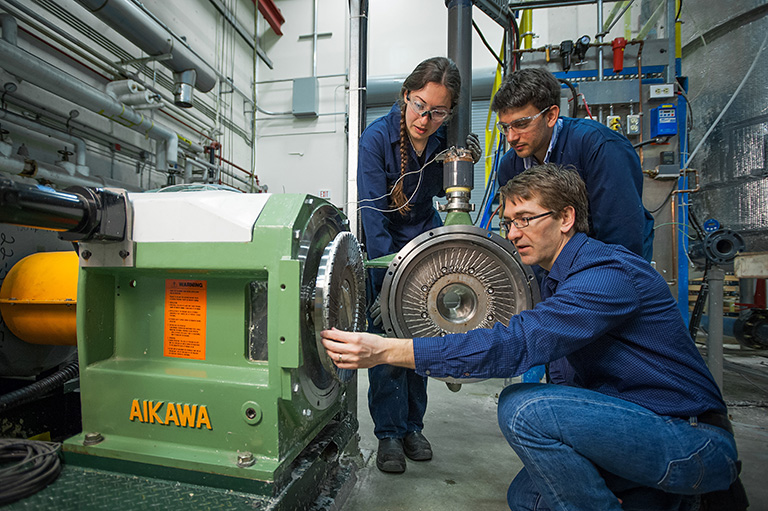Pulp Friction
The path to advances in research in the forestry sector are being discovered and developed by Professor James Olson, associate dean for Research and Industrial Partnerships and former director of the UBC Pulp and Paper Centre (PPC). The way forward is clear: significantly reduce energy consumption while meeting provincial economic and sustainability goals through innovative engineering design. To explain the scope of the project, Olson uses the analogy of replacing Victorian-era machinery with today’s high-performance technology.
His team’s ultimate goal: trim the sector’s energy consumption by 20 percent or 1,000 gigawatt/hours a year (the equivalent of 100,000 homes) and cut the sector’s greenhouse gas emissions in half by 2020.
“The message I always try to get out is that the work we do is directly related to the priorities of the province,” says Olson. “We are UBC – this sector is key to BC’s prosperity. What we’re doing is providing home-grown technical solutions to directly impact the competitiveness of the industry and provide highly qualified personnel for the industry.”
Softwood pulp is among BC’s largest and most economically crucial industries, but mechanical pulping is energy intensive and cuts deep into the sector’s margins, reducing its global competitiveness and affecting the many rural communities whose own economies – and jobs – depend upon this industry.
Olson notes that the BC forest industry is strategically important to this province and is reasonably integrated to extract full value from the trees or in industry speak, ‘units of value’. He goes on to explain that dimensional lumber or building material has the most value but can’t support the industry alone; coupled with pulping revenue however, it can and if the pulping sector is to extract full value, it must make the most efficient use of the fibre.
Chemical pulping requires comparatively little electric power but it “dissolves away half the tree” and although the residue is used to generate thermal/electric power, it is not as resource efficient in terms of ‘lost’ fibre.
Courtesy of its “monster machines” or chip refiners, mechanical pulping literally shreds the chips into 100-percent useable fibre. However, the energy intake is ravenous; each of the 70 or so chip refiners in BC consumes 25 megawatts of power or collectively (and depending on demand) more than 10 percent of all power produced by BC Hydro.
Among other refinements, Olson and his team have proposed the wide-scale replacement of the old power-hungry chip refiners with multi-stage, new-tech, ‘high consistency’ machines that get the job done with far less energy: “It’s like taking an old steam engine and replacing it with a couple of smaller, high-performance engines.”
Powered by a $2.7-million National Sciences and Engineering Research Council of Canada (NSERC) grant, backed by a consortium of 16 mechanical-pulp companies and assisted by the universities of Toronto and Victoria, the result is a focused, five-year university/industry research collaboration.
In addition to funding the latest equipment, the NSERC grant will help attract and support the best graduate students who, along with professors and senior researchers, will target almost a dozen inter-related projects to develop new processes with novel sensors and advanced computer control.
The aim: add to PPC’s roster of innovative technologies.
Currently, the list includes PPC’s high-performance pulp-screen rotors that cut power consumption in half (now used worldwide with an even more efficient version in the works), new fibre separation and refining processes for mechanical and chemical pulp, and Olson’s own work in the development and commercialization of a fibre-quality analyzer that to date, has sold 150 units and reached $25 million in sales.
Upping the competitiveness and reducing power demand in the BC pulping industry by even a fraction has big down-stream payoffs, notes Olson. Not just environmentally but economically. The clean ‘surplus’ hydroelectric power can be sold over the borders to everyone’s collective benefit – and further underline UBC’s worth and purpose.
“It is ‘UBC for BC’,” says Olson. “We’re trying to develop technology, develop people and develop solutions specifically for BC and the BC forest industry.”
Read more about
Research ExcellenceRead more Research Excellence stories:
This story also illustrates our commitment to:
Student LearningRelated Content

“We’re trying to develop technology, develop people and develop solutions specifically for BC and the BC forest industry.”

Campus
Vancouver